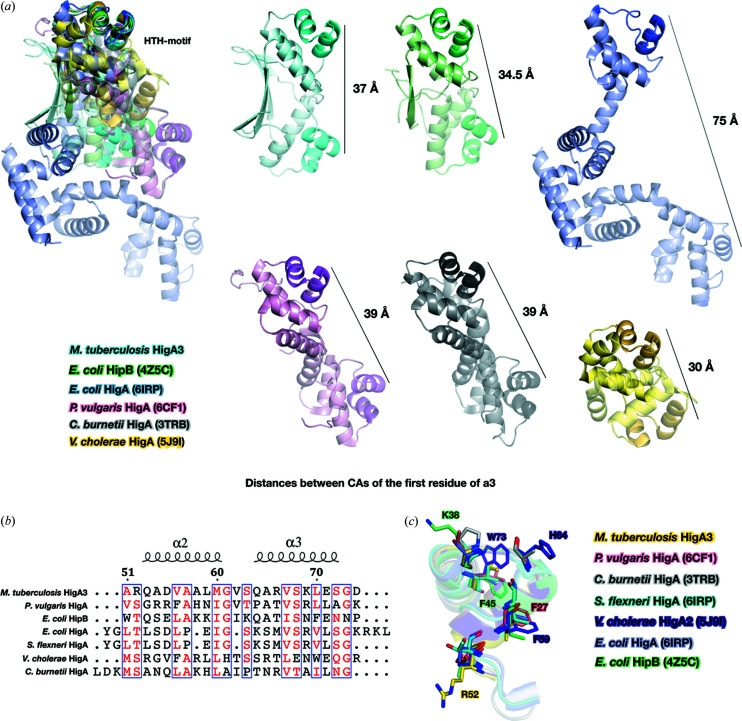Figure 2.
Sequence and structural comparison of MtHigA3 with other homologues. (a) Superposition and structural comparison of MtHigA3 with the structures of E. coli HipB (lime green, PDB code: 4z5c), E. coli HigA (slate, PDB code: 6irp; Yoon et al., 2019 ▸), P. vulgaris HigA (pink, PDB code: 6cf1; Schureck et al., 2019 ▸), C. burnetii HigA (grey, PDB code: 3trb; Franklin et al., 2015 ▸) and V. cholerae HigA (yellow, PDB code: 5j9i; Hadži et al., 2017 ▸). The adjacent chain of each dimer is coloured lighter, and HTH motifs are coloured darker. The distances between CAs of the first residue of the α3-helix are shown as black lines. (b) Sequence alignment focusing on the HTH motif region in M. tuberculosis HigA3, P. vulgaris HigA, E. coli HipB, E. coli HigA, S. flexneri HigA, V. cholerae HigA and C. burnetii HigA. Similar residues are coloured red in the box. Secondary structural elements of MtHigA3 are presented above the sequence, where the helices are indicated by springs. The residue numbering corresponds to M. tuberculosis HigA3. (c) Superposition of the HTH motif of M. tuberculosis HigA3 (yellow) with the structures of P. vulgaris HigA (pink, PDB code: 6cf1), E. coli HipB (lime green, PDB code: 4z5c), E. coli HigA (slate, PDB code: 6irp), S. flexneri HigA (cyan, PDB code: 5ycl), V. cholerae HigA (purple blue, PDB code: 5j9i) and C. burnetii HigA (grey, PDB code: 3trb). Positively charged residues and aromatic residues are shown as sticks.

